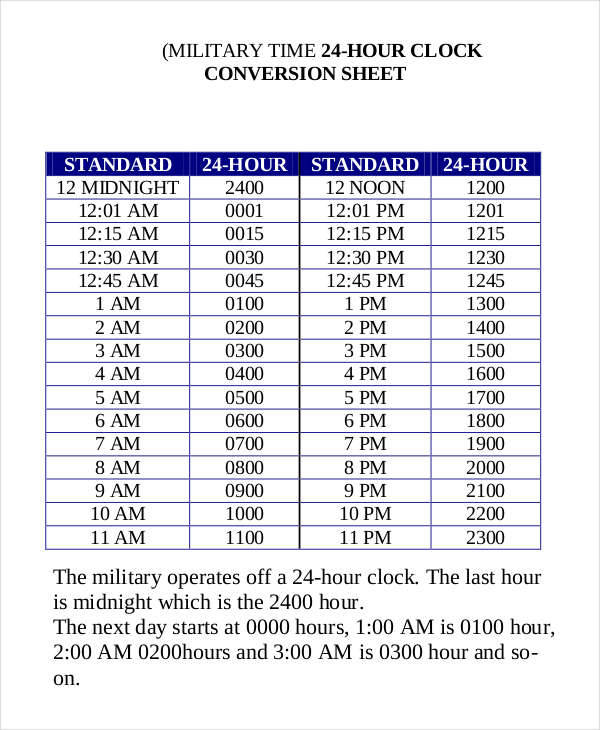
Train station in Amsterdam, Netherlands: the train to Den Helder leaves at three minutes to four (15:57). Eleven at night (2300) is “twenty-three hundred hours.”.Ten o’clock in the morning (1000) is “ten hundred hours.”.

Three o’clock at night (0300) is “zero three hundred hours.“.In military time, this is done by using the word “hundred,” followed by “hours.” You never say “thousand,” even for times like 1000 (ten o’clock).
TIME CLOCK CONVERSION .80 FULL
The next portion of the military time code will tell the recipient that you are referring to a full hour (e.g., five o’clock) and not a time in-between full hours (e.g., half past five).
But, ten o’clock (10) doesn’t have a leading zero, so it is simply “ten.” The same goes for all numbers up to 23. Nine o’clock in the morning (09) is “zero nine.”. One o’clock at night (written 01) is stated as “zero one” instead of just “one.”. The first thing you need to get used to is pronouncing the leading zero if there is one. It takes a bit longer to say it, but adding those extra syllables will make it easier to understand what you’re saying, even through the commotion in an ER or over a crackling radio. That’s why military time uses a special code. In those high-pressure situations, it can be crucial to communicate a time clearly and leave as little room for ambiguity and misunderstandings as possible. Military time provides crucial clarity in emergency rooms and other high-stakes situations. And then, there’s Daylight Saving Time ( DST), changing the UTC offset twice a year-but only in some areas. Time zones are complex: there are crooked time zone boundaries, areas with odd offsets, additional time zones lurking in a bulge of the International Date Line, and hundreds of official and unofficial time zone designations. This brings us to the final segment of the military time notation: the letter at the end designating the time zone. They tell you the number of minutes past the hour. This is the easy part: the minutes work exactly the same as in the 12-hour clock format. Note that military time doesn’t use a separator between the hours and the minutes. At 12 am (midnight), the hour count is reset to 00. 
In other words, for the period from 1 pm to 12 am, you have to subtract 12 to convert to the 12-hour format. The real fun starts after 12 noon when the 12-hour system jumps all the way back to 1 while the 24-hour system just keeps counting upward. The 24-hour clock is the world’s most widely used time format, while military time is only used in some contexts, such as the military and emergency services. It uses a special notation and pronunciation geared toward clarity and conciseness.Īlthough it is often used as a synonym for the 24-hour clock, and the two are closely related, they are not the same. Military time is a format for expressing time based on the 24-hour clock. Business Date to Date (exclude holidays).






 0 kommentar(er)
0 kommentar(er)
